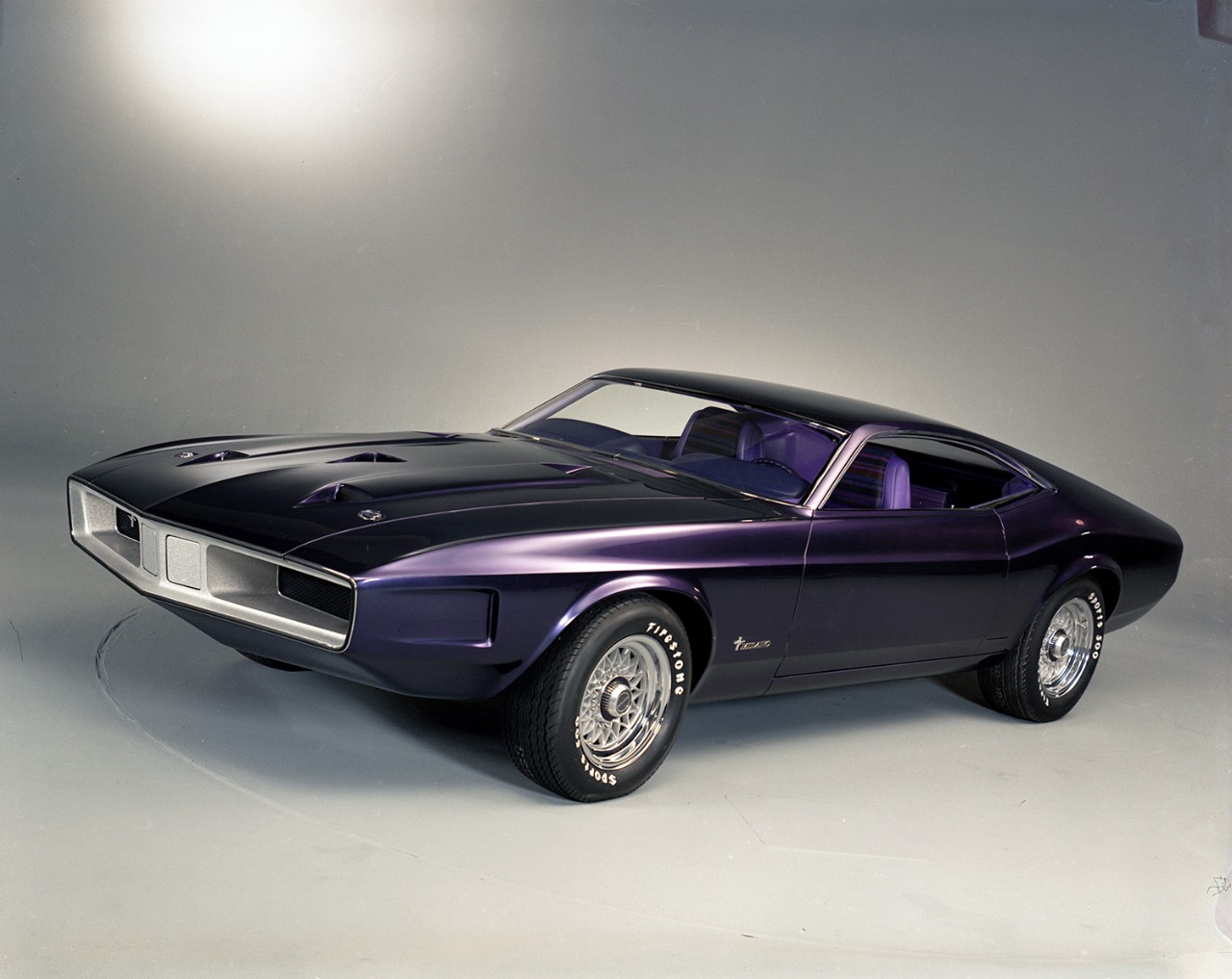
Ford's Mustang is perhaps the most iconic pony car of all time. From its introduction to the North American market in 1964 to the newest 2014 model, the Mustang and its various iterations are easily recognizable as a car that encompasses equal parts performance and looks.
But what about the ponies that didn't make it out of the stable? Ford has invested millions of dollars and countless man hours into each new concept, hoping to create as much of a buzz as the models that preceded them. Some you may recognize, others you may not, but here's a glimpse of some Mustang studies that nearly made it to our streets.
1964 two-seater study
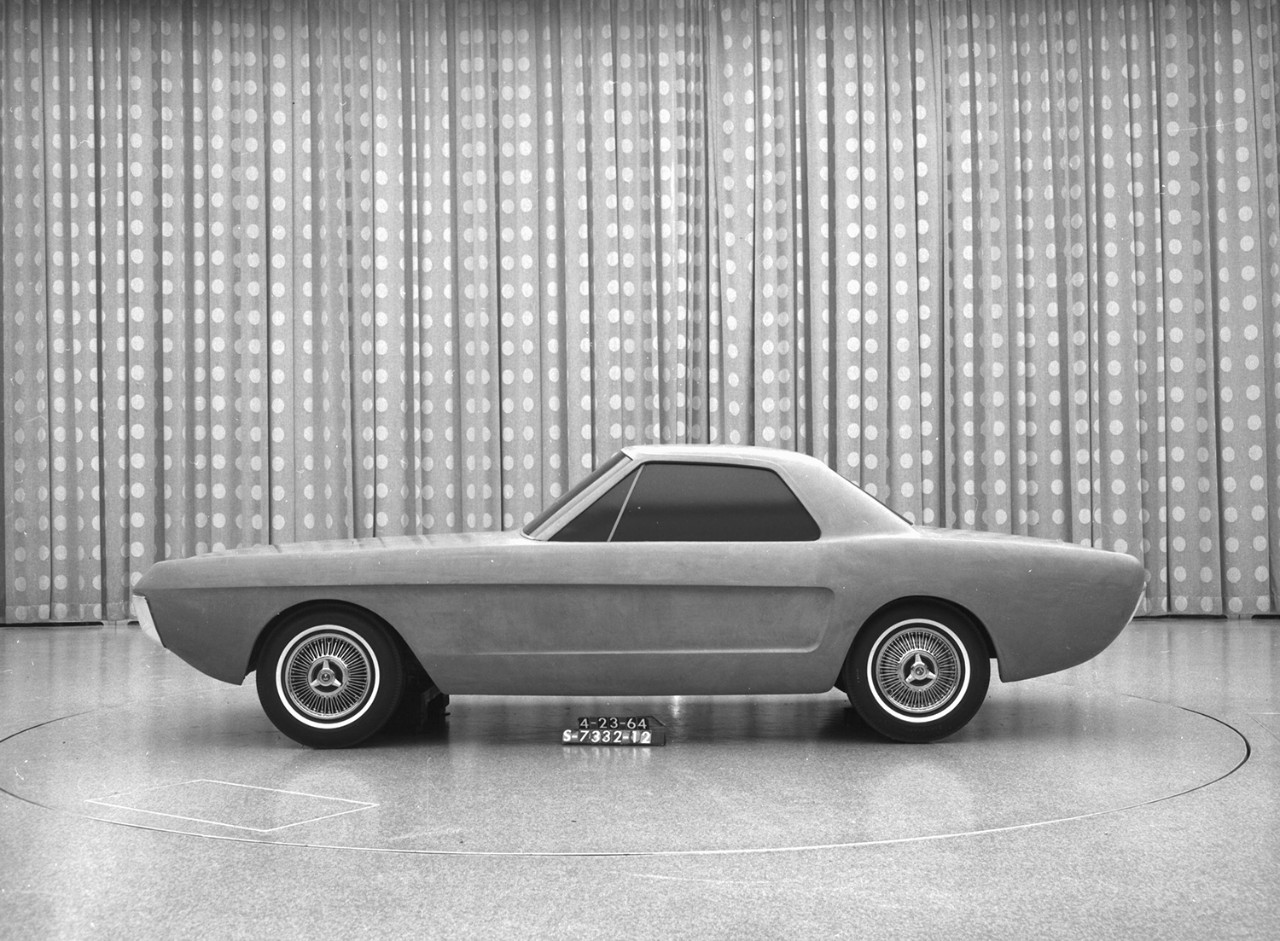
This 1964 clay model of a two-seat Mustang incorporates some of the design cues of the production 1965 car including the side scoops.
1961 Avventura, Avanti, Allegro
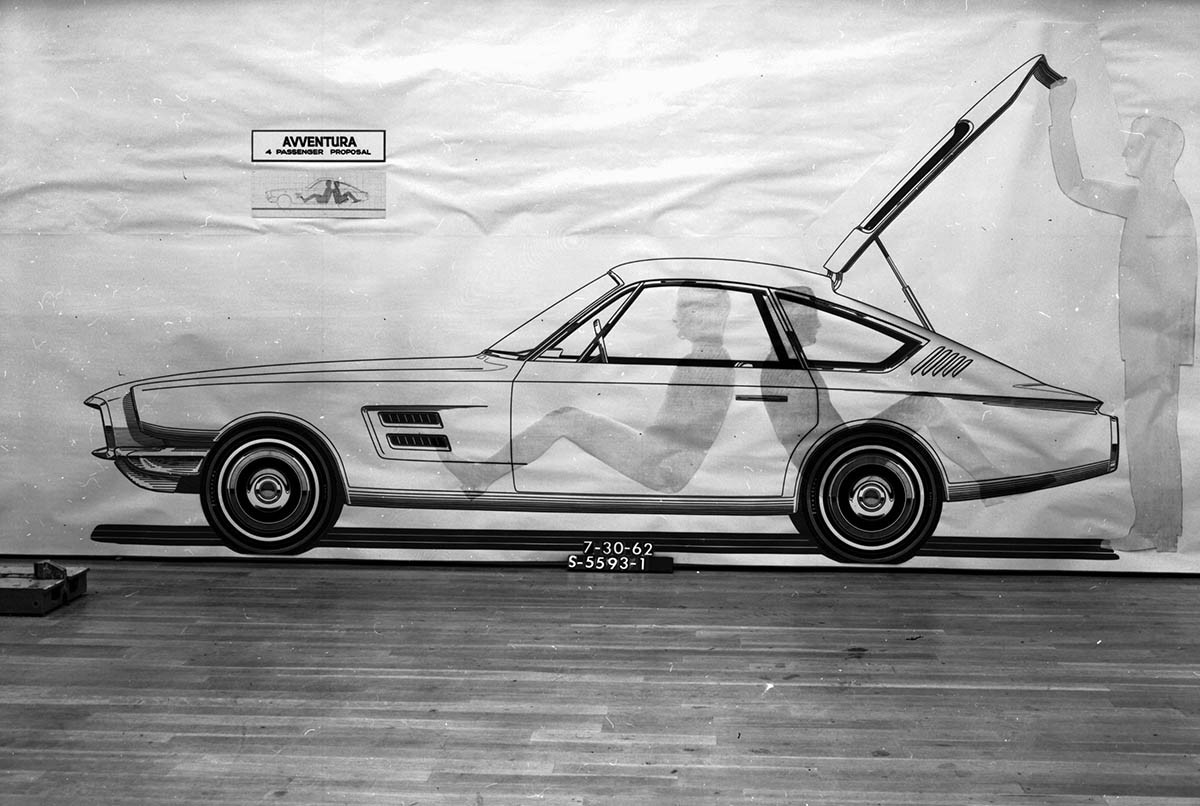
From late 1961 into mid-1962, Ford designers tried out a wide range of themes for a sporty coupe based on the platform of the new Falcon compact. Each design was given an internal name for the purpose of discussion. One fastback design actually went through at least three different names starting with Avventura before moving on to Avanti and finally Allegro. The fastback design was originally sketched with a hatchback and rear-facing second row seat. While this car never made it to production, a variation of the fastback profile was eventually adopted as the third bodystyle for Mustang.
Avanti/Allegro concept

As Avventura moved from sketch to physical design model, the hatch was replaced with a trunk and the rear seat was switched to a more conventional forward-facing orientation. Originally shown internally as Avanti, the name was eventually changed to Allegro, likely because Studebaker had introduced its own production Avanti coupe around the same time.
1961-62 two-seater studies
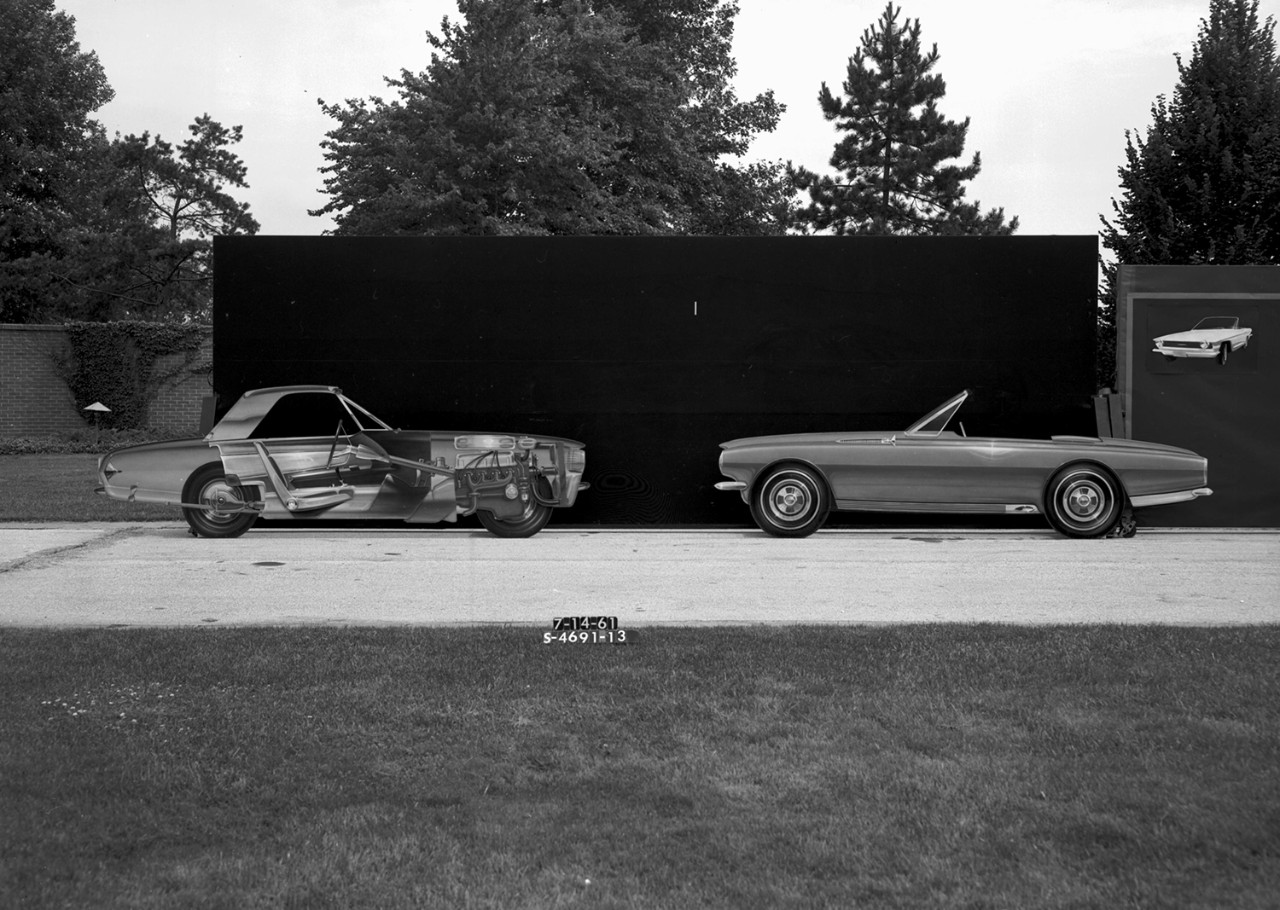
Early in the gestation of the original Mustang, Ford designers also considered a number of two-seater studies. These were seen as a more affordable return to the roots of Thunderbird, which by this time had grown into a much larger four-seater. The idea of a two-seat Mustang was something designers returned to frequently in the period between the original Mustang 1 concept and the 1992 Mach III. Aside from some track-oriented Mustangs that had the rear seats removed to save weight, there has never been a strictly two-seat production Mustang.
1962 Allegro design study
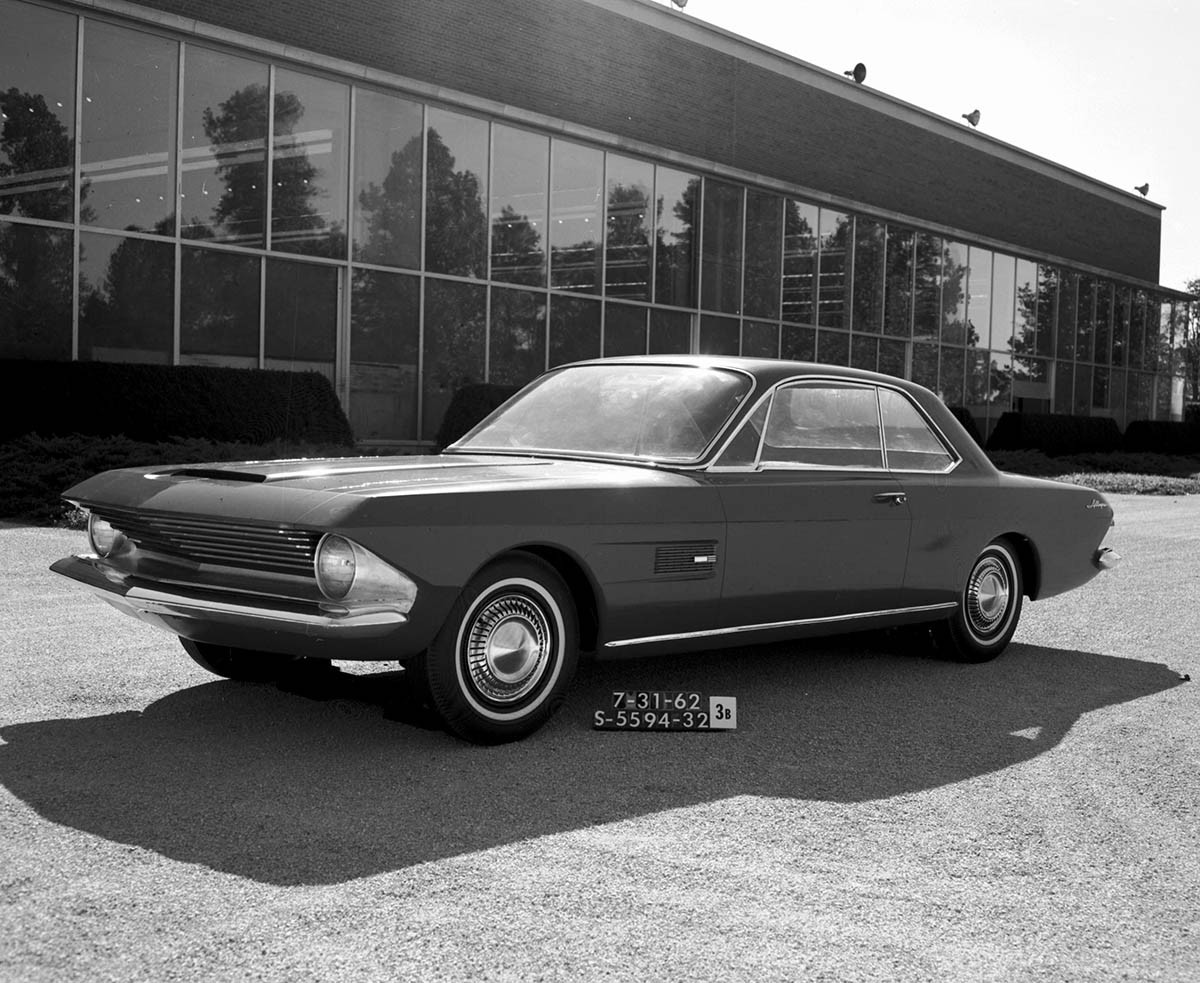
In 1962, the design team, led by Gene Bordinat, worked on several iterations of another design called Allegro. While the production 1965 Mustang was a very different car in almost every visual detail from Allegro, the design study established the basic proportions that would define most Mustangs for the next five decades. The notchback coupe had the same long-hood, short-deck layout with a compact greenhouse that would roll out of the Rouge factory two years later.
1963 two-seat, mid-engine concept
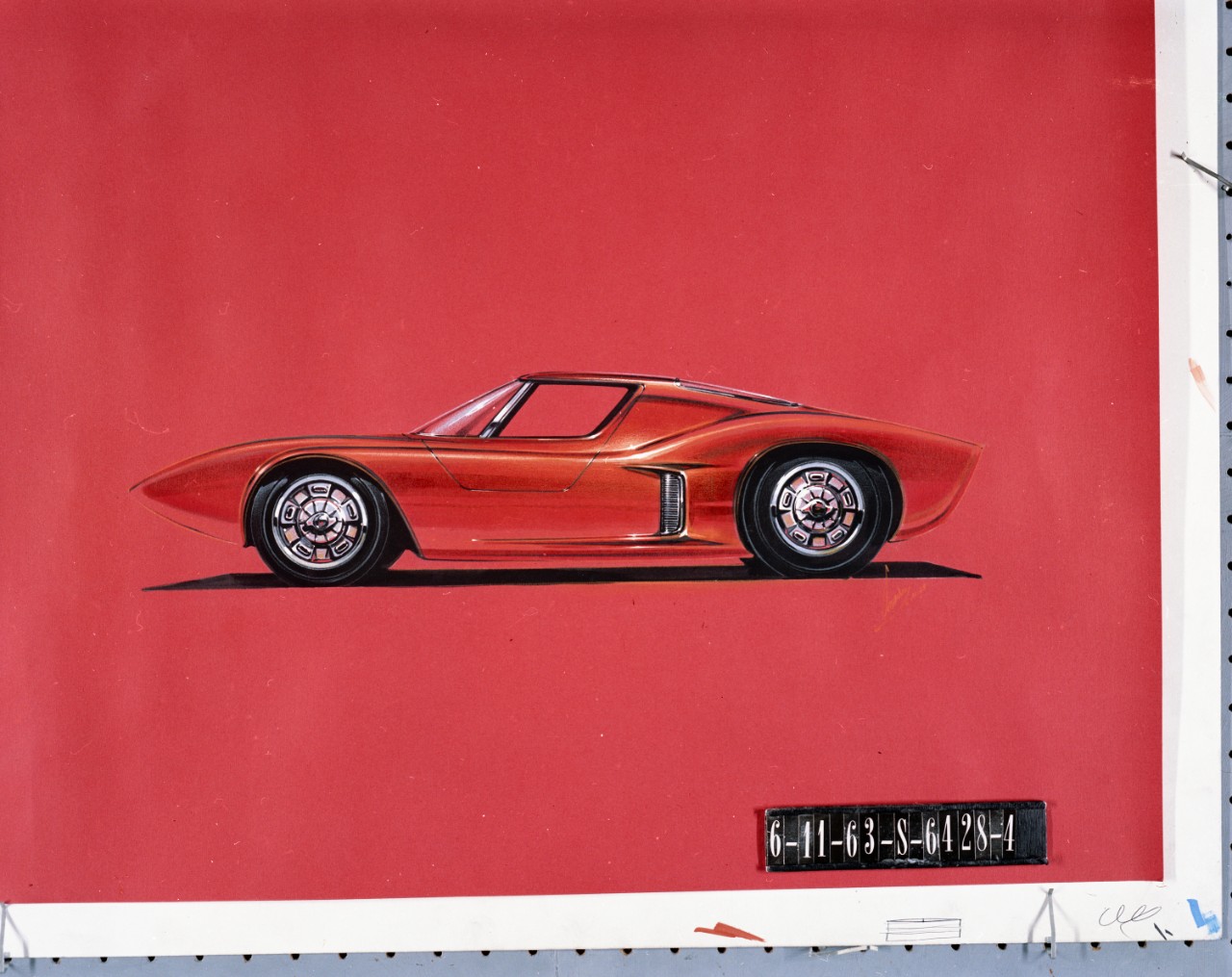
Although it was probably never seriously considered for production as a Mustang, this hard-top variation of the Mustang 1 concept from 1962 did provide some inspiration for the GT40 MK I that would race at Le Mans and elsewhere beginning in 1964.
1965 four-door Mustang
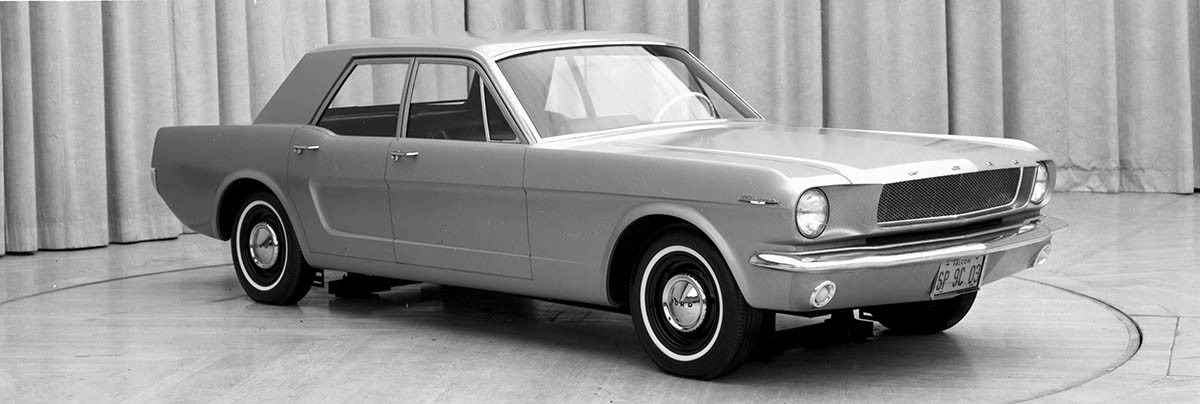
When you have a product as enormously successful as Mustang, you invariably have to consider how to capitalize on the idea. While Mustang used the platform of the compact Falcon as its starting point, the four-door Mustang could have brought the idea full circle by adding two doors to the pony car. Fortunately for Mustang fans, cooler heads prevailed.
1966 Mustang station wagon

In the mid-1960s, Ford designers considered at least a couple of different concepts for a Mustang station wagon, with at least one running prototype based on a 1966 coupe getting built. Another design study included elements for refreshed models that were coming later that decade. All of the known Mustang wagons were three-doors that were closer to a European “shooting brake” than a traditional American family station wagon.
1967 Allegro II concept

In 1967, Ford designers decided to reprise one of the original Mustang design concepts from 1962 with a new form and repurposed name. Starting with the Avanti/Allegro fastback coupe, the greenhouse was removed and replaced with a low-cut speedster-style windshield, rollbar, flying buttresses on the rear deck and a new rear end. The reworked concept was dubbed Allegro II.
1966 Mach 1 concept
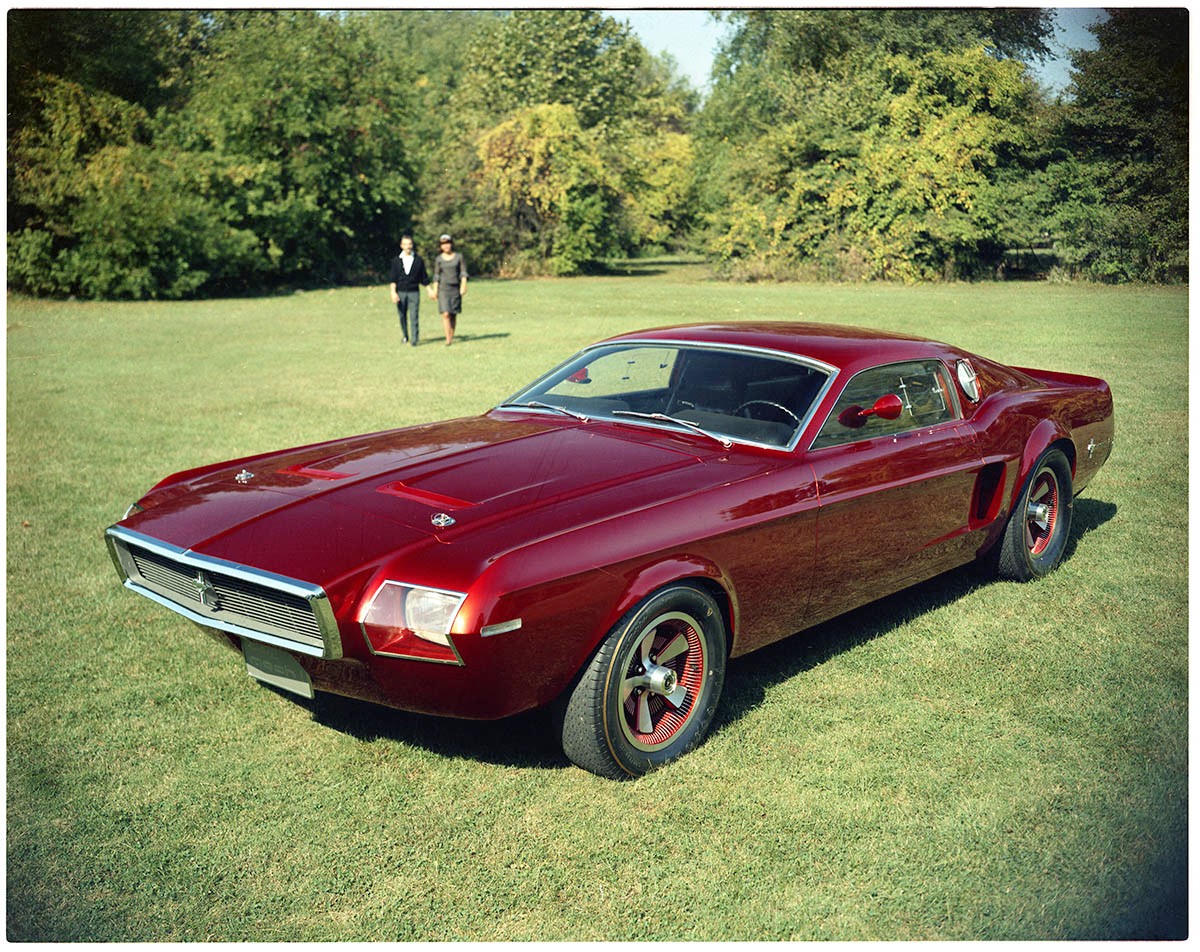
As the first-generation Mustang transitioned from a pony car to a larger and heavier big-block muscle car, the Mach 1 concept was created as a preview of the 1968 model. The original nose of the concept drew inspiration from the 1963 Mustang II concept.
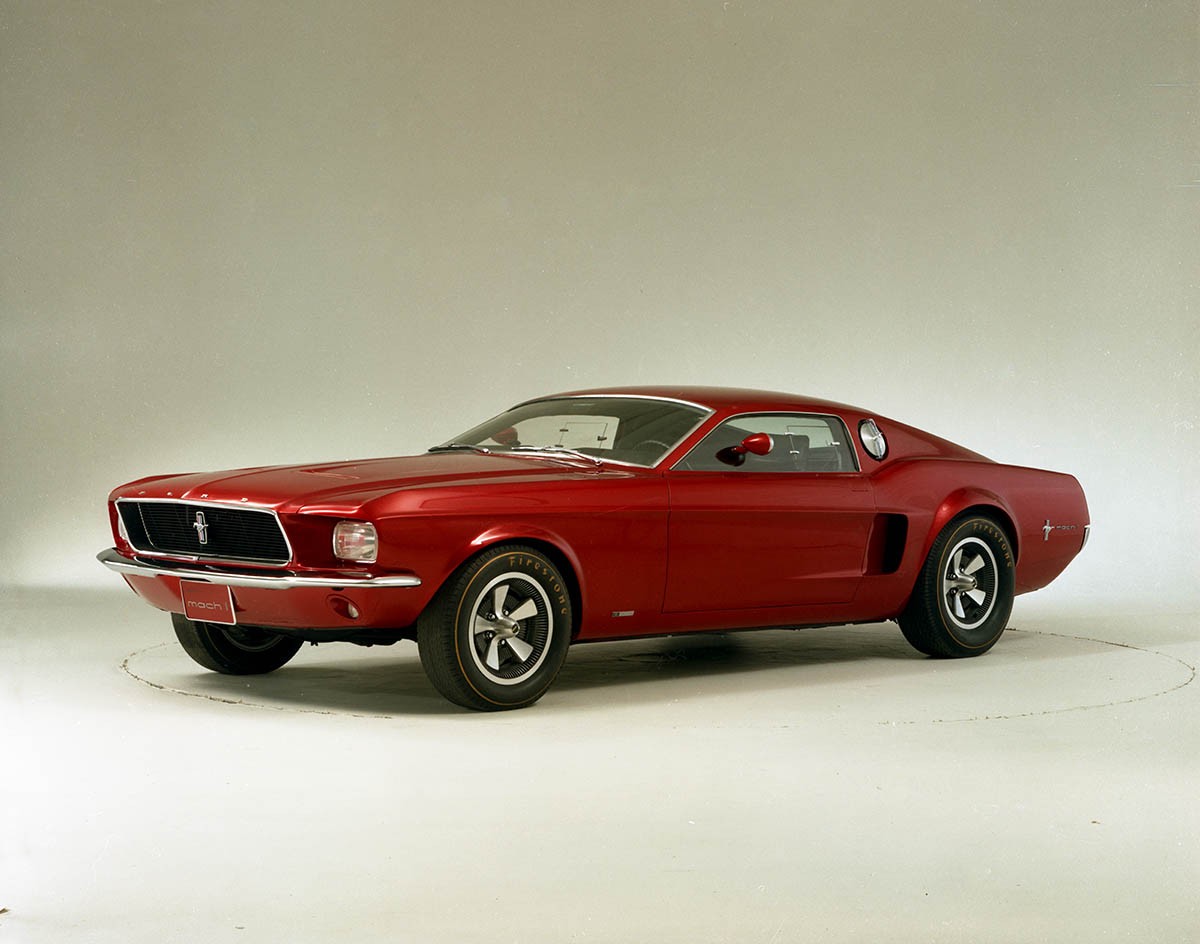
The Mach 1, as it was shown at the 1967 Detroit Auto Show with a face closer to production Mustangs of the time. The low-cut roofline and racing-type fuel cap never made it to production, but the hatchback did eventually arrive on the 1974 Mustang II.
1967 Mach 2 concept
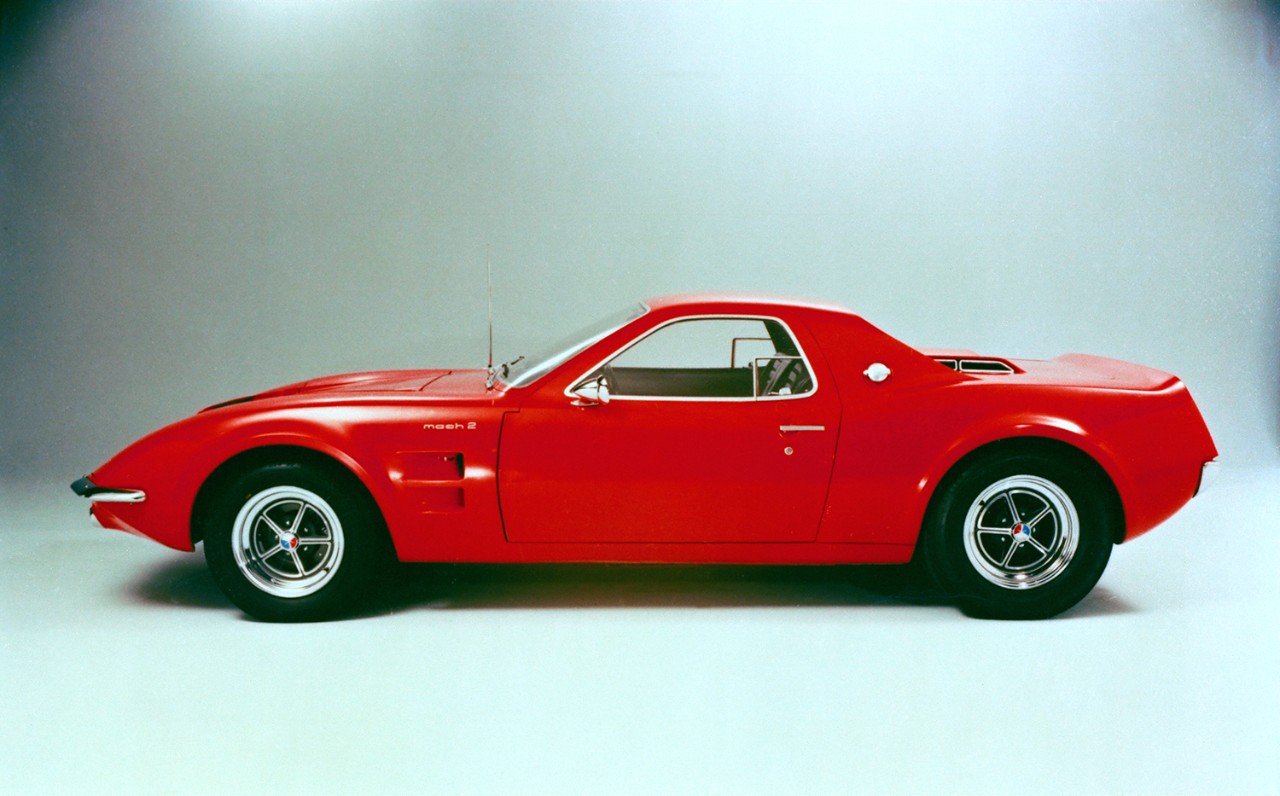
With the Mustang having already set sales records following its launch in 1964, Ford design chief Gene Bordinat and the Special Vehicles Group decided to try rearranging the pieces for the Mach 2 concept. The 289 Hi-Po V8 was shifted from the front to behind the two seats to evaluate the layout as a possible successor to the Shelby Cobra. Despite its mid-engine layout, the Mach 2 retained the long-hood, short-deck proportions of a Mustang. Unfortunately, the Mach 2 never went much beyond the auto show circuit.
1970 Mustang Milano concept (shown top, below)
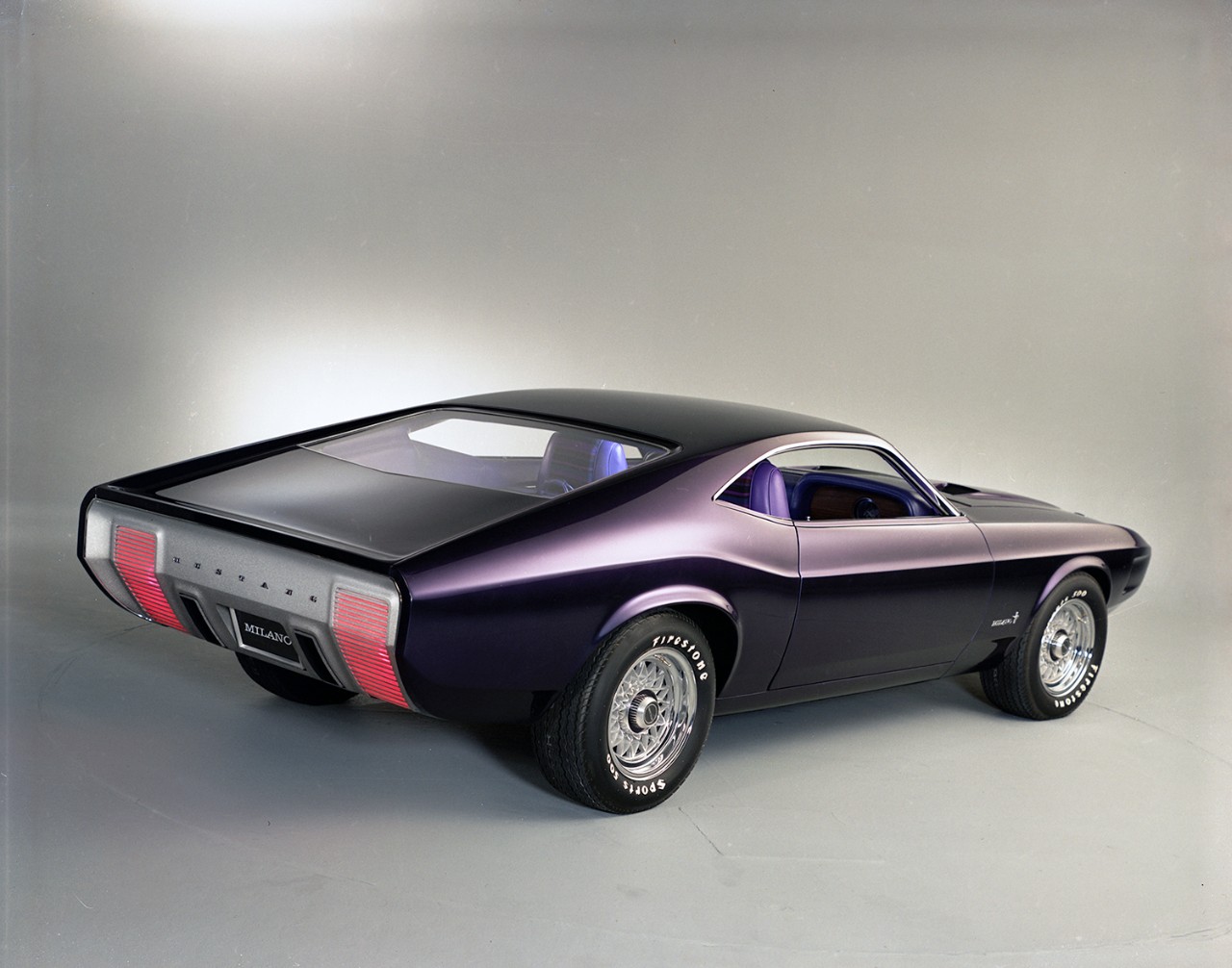
First shown publicly at the February 1970 Chicago Auto Show, the Mustang Milano concept previewed the nearly horizontal rear deck and sharp, extended nose that would be seen on the production 1971 model. However, aside from those two elements, the Milano didn’t really bear much resemblance to any production Mustang. In fact, the car that probably drew most heavily on the Milano profile was the Australian-market Falcon XB coupe of the mid-1970s.
1980 Mustang RSX concept

Created at the Italian Ghia design studio, the RSX was conceived as a rally special based on the new Fox-body third-generation Mustang that debuted for the 1979 model year. With a one-inch-wider track and 5.6-inch-shorter wheelbase than the road-going Mustang, the RSX had extra ride height that would be needed for dealing with the off-tarmac stages of European rallies.
“Bruce Jenner” design study
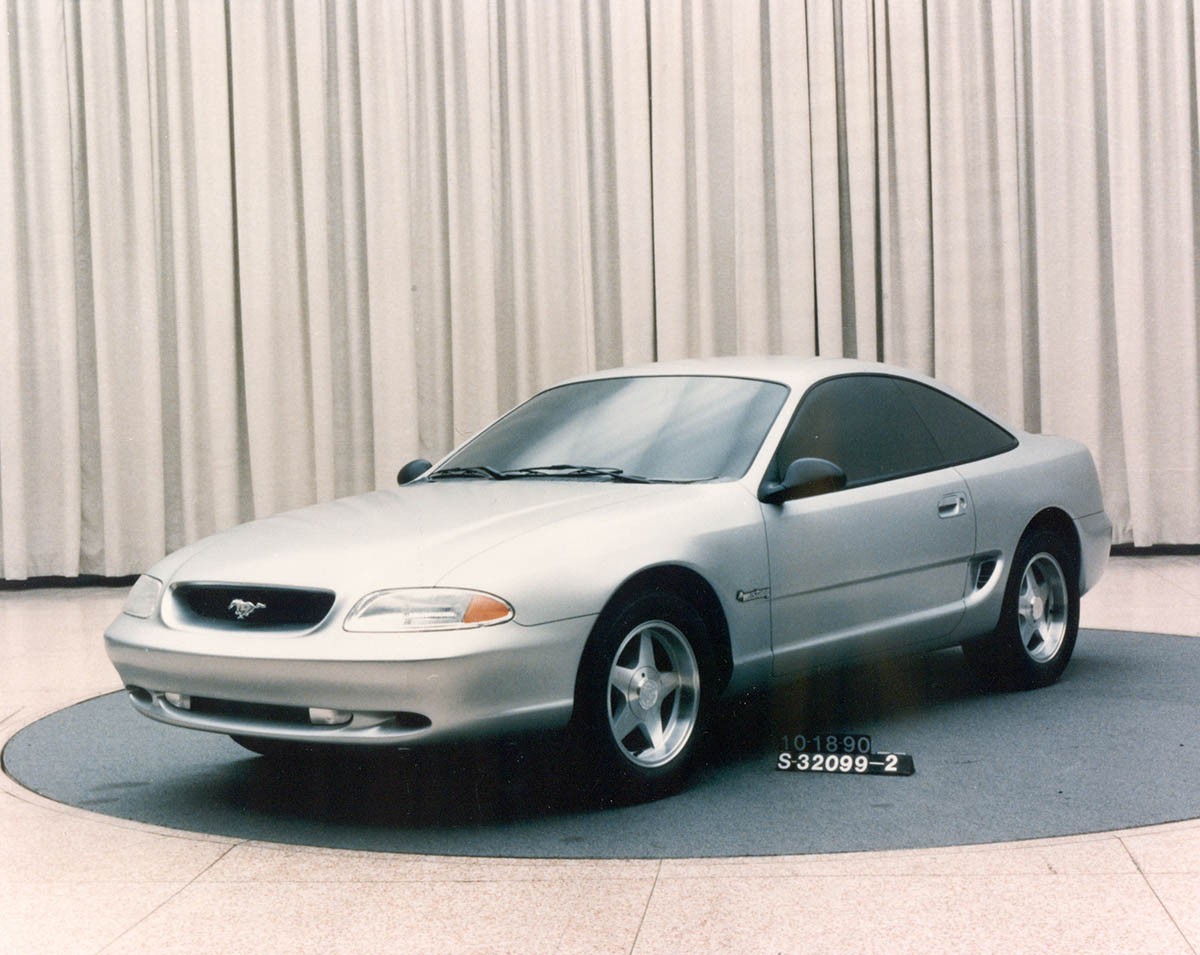
In 1990, Ford designers evaluated a number of themes for a replacement for the long-running third-generation Mustang. The notchback and hatchback bodystyles would be replaced with a single fastback coupe format. After departing from many of the original design cues on the third-generation models, the upcoming fourth-generation would return elements like the galloping pony in the grille, the side scoops and the tri-bar taillamps. This softer concept, known as “Bruce Jenner” wasn’t considered aggressive enough to be a Mustang.
“Rambo” design study
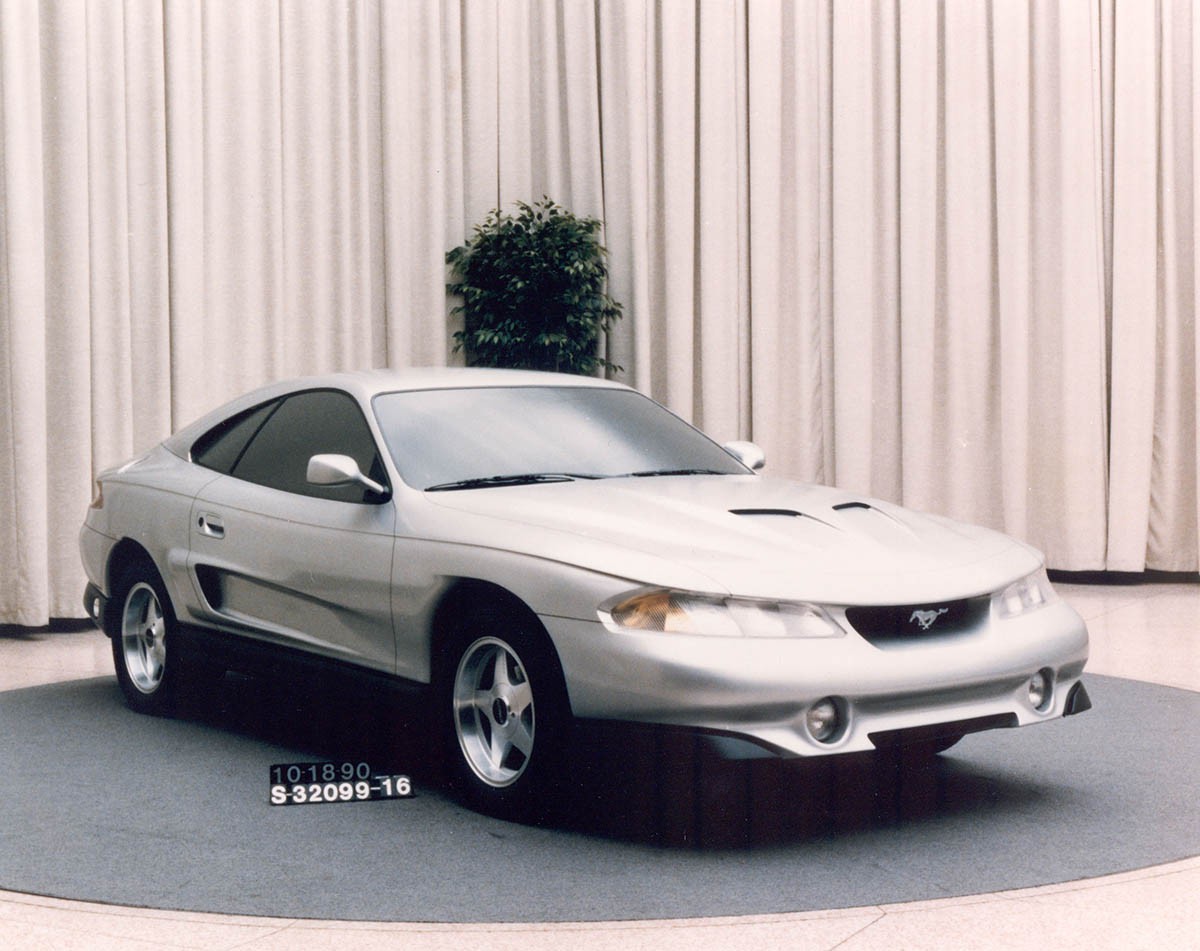
The alternative proposal to the "Bruce Jenner," dubbed “Rambo,” was deemed too extreme for production.
1992 Mach III concept
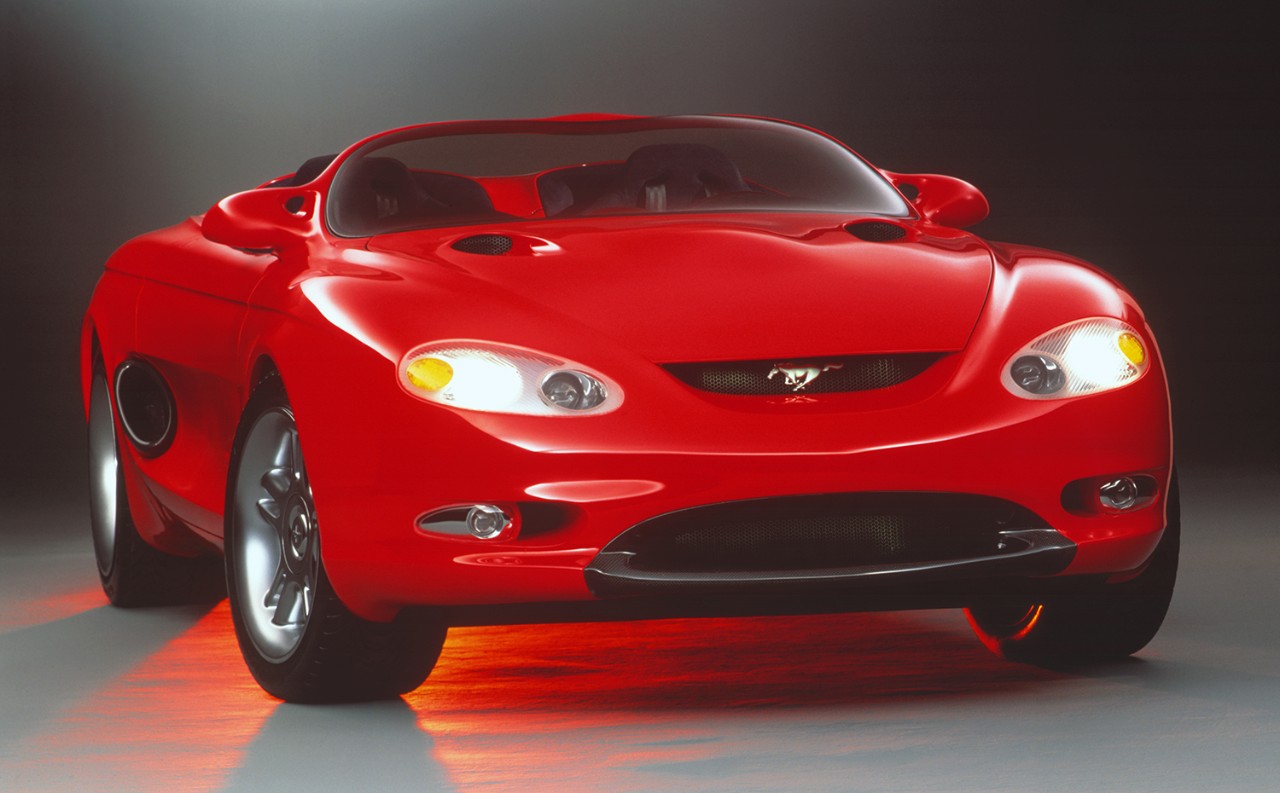
The Mach III provided the first public hints of the new design direction that was coming for the fourth-generation Mustang. While classic elements like the grille pony badge, side scoops and tri-bar taillamps were included on the 1994 Mustang, the two-seater layout and the low-cut speedster windshield have never been part of a regular production Mustang.

























